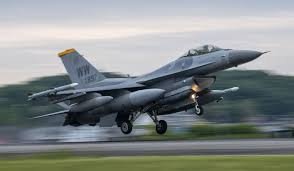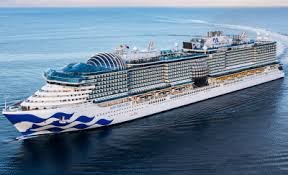
what is the best fighter jet in the world
The question of what is the best fighter jet in the world is complex, as modern military aviation involves advanced technologies, diverse missions, and constantly evolving capabilities. Fighter jets are judged based on speed, stealth, maneuverability, firepower, and overall mission versatility. While different nations prioritize different features, several aircraft stand out as leaders in today’s skies.
Criteria for Determining the Best Fighter Jet
To decide which aircraft deserves the title of the best, experts consider several criteria:
- Stealth technology: Reducing visibility to enemy radar.
- Speed and agility: Ability to outmaneuver opponents in combat.
- Avionics and sensors: Advanced radar and targeting systems.
- Weapons systems: Air-to-air and air-to-ground capabilities.
- Multirole flexibility: Performing various missions effectively.
- Combat record and reliability: Proven effectiveness in real-world operations.
With these standards in mind, a few modern fighters rise above the rest.
The F-35 Lightning II
The F-35 Lightning II, developed by Lockheed Martin, is widely considered one of the most advanced fighter jets ever built. It is a fifth-generation multirole stealth aircraft capable of performing air superiority, ground attack, and reconnaissance missions. Its stealth design reduces radar cross-section, making it extremely difficult to detect. Equipped with advanced sensors and networked data-sharing systems, the F-35 allows pilots to gain a clear battlefield picture. Variants like the F-35A, F-35B, and F-35C make it adaptable for air force, marine, and navy use.
The F-22 Raptor
The F-22 Raptor, also from Lockheed Martin, has long been regarded as the premier air superiority fighter. Introduced in the early 2000s, it combines stealth, supercruise capability (sustained supersonic flight without afterburners), and unmatched maneuverability. The F-22 remains one of the most dominant aircraft in dogfighting scenarios. Although the U.S. stopped production due to high costs, the existing fleet continues to serve as a powerful deterrent.
The Sukhoi Su-57
Russia’s answer to American stealth fighters is the Sukhoi Su-57. Designed as a fifth-generation jet, it features stealth elements, supercruise ability, and advanced weapon systems. The Su-57 is intended to rival both the F-22 and F-35, though it has faced challenges in production and deployment. Its combination of maneuverability and modern avionics makes it a formidable aircraft in theory, though limited operational use has left questions about its long-term effectiveness.
The Chengdu J-20
China has entered the fifth-generation arena with the Chengdu J-20. Designed for stealth and long-range engagement, the J-20 represents China’s push to modernize its air force and compete with U.S. and Russian technology. It features stealth shaping, advanced sensors, and an impressive weapons payload. While exact capabilities remain classified, the J-20 demonstrates China’s growing influence in modern airpower.
The Eurofighter Typhoon
The Eurofighter Typhoon, developed collaboratively by several European nations, is a highly capable fourth-generation-plus multirole fighter. Known for its agility, advanced avionics, and powerful weapon systems, the Typhoon has seen extensive service in NATO operations. Although it lacks the stealth of newer fifth-generation aircraft, its proven combat performance and adaptability keep it relevant on the world stage.
Dassault Rafale
France’s Dassault Rafale is another highly respected fighter jet. It is a versatile multirole aircraft designed to operate from both land bases and aircraft carriers. Known for its agility, advanced radar systems, and wide weapons compatibility, the Rafale has been successfully deployed in real combat missions. Its ability to perform air-to-air, air-to-ground, and nuclear deterrence roles makes it one of the most balanced jets in service today.
Comparing Generations: Fourth vs. Fifth
The main difference between fourth-generation and fifth-generation fighter jets is stealth and sensor fusion. While fourth-generation aircraft like the Eurofighter Typhoon and Rafale remain highly capable, they cannot compete with the stealth features of jets like the F-35 and F-22. However, cost-effectiveness and proven combat records mean many air forces still rely heavily on fourth-generation fighters.
Global Influence of Fighter Jets
Fighter jets are not just military tools—they are also symbols of national power and technological achievement. Nations that develop or operate fifth-generation fighters are often viewed as leaders in defense capability. The competition between the United States, Russia, and China in developing the most advanced aircraft reflects broader geopolitical rivalries.
Cost and Accessibility
The best fighter jets are often the most expensive. The F-35 program, for instance, costs billions of dollars, but its widespread adoption by U.S. allies demonstrates its value. In contrast, aircraft like the Rafale or Typhoon provide advanced capabilities at a lower cost, making them more accessible to smaller nations. Balancing cost with capability is a key factor for air forces around the world.
Which Jet Is the Best?
Determining the best fighter jet depends on context. If stealth and technology integration are the main criteria, the F-35 Lightning II stands out. If air superiority in dogfighting is the focus, the F-22 Raptor remains unmatched. For cost-effective versatility, the Rafale and Typhoon remain excellent choices. Ultimately, the “best” jet is not universal—it depends on mission requirements, budget, and strategic priorities.
Future of Fighter Jets
The future of fighter aircraft includes sixth-generation projects already in development. Programs such as the Next Generation Air Dominance (NGAD) in the U.S. and the Future Combat Air System (FCAS) in Europe aim to incorporate artificial intelligence, drone swarming, and even more advanced stealth. These next-generation jets will likely redefine what “best” means in air combat within the next two decades.
Where to Learn More
For detailed technical insights, the official Lockheed Martin website provides specifications for the F-22 and F-35. Aviation enthusiasts and professionals can also find comparisons, reviews, and news on Airforce Technology, which covers global defense aviation updates.
Conclusion
So, what is the best fighter jet in the world? The answer depends on how one defines “best.” For stealth and multirole capability, the F-35 Lightning II is unmatched. For dogfighting supremacy, the F-22 Raptor remains king. Meanwhile, the Su-57 and J-20 represent rising competitors, while the Rafale and Typhoon prove that fourth-generation fighters still have an important role. The skies of the future will bring even more advanced aircraft, but for now, the best fighter jets represent the peak of human engineering, strategy, and defense innovation.






